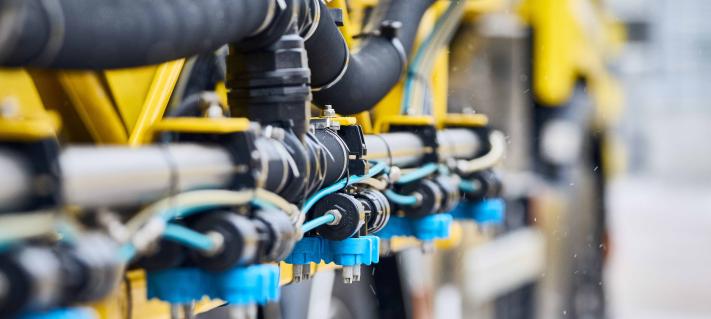Good environmental work is part of Finavia's corporate responsibility. Our Sum of Good Things series highlights details of Finavia's responsibility work. This story is about the use of renewable energy at the airports.
At airports, electricity is needed for lighting, ventilation and electronic systems, among other things. The electricity used at Finavia’s airports is fully renewable. Finavia airports use certified wind power generated in the Nordic countries. The origin of the electricity is guaranteed through an official RES-GO (Renewable Energy Sources, Guarantees of Origin) system.
“Wind electricity causes no emissions to air, water or soil. At Helsinki Airport, we started using renewable electricity in 2017, and spread the use to all Finavia airports in 2018. At Helsinki Airport alone, choosing Nordic wind electricity has reduced carbon dioxide emissions by around 10,000 tonnes,” says Reijo Särkkä, Finavia’s Deputy Director.
Unlike other Finavia airports, Helsinki Airport doesn’t rely on wind electricity alone. Solar electricity is produced at the airport’s own solar power plant. The power plant is currently being expanded, after which it is expected to have a production capacity of 750 kWp. Solar electricity will then cover around one percent of the electricity used at Helsinki Airport. The production of solar energy is highest between March and September, which is also the period when the need for cooling energy is at its peak.
LED lighting saves energy
Last year, around 56,000 MWh of electricity was used for Finavia’s own operations at Helsinki Airport. The amount is more than ten times the equivalent at Oulu Airport, the second biggest Finavia airport when it comes to electricity consumption.
Structural and technical solutions help to keep electric energy consumption at the lowest possible level. For instance, LED lights are energy efficient and many devices function on needs-based automation. It may seem that these choices have little impact, but with hundreds of lights and devices used at the airports, the cumulative positive effects are significant.
“For example, all lighting systems at Tampere Airport use LED technology. When the lighting at Helsinki Airport’s terminal 1 was renewed last year, we were able to halve the number of lights as energy efficiency improved. This way, the electric energy consumption of the terminal is 80 percent less,” Särkkä says.
Carbon neutrality as a guideline
All Finavia airports are carbon neutral. Helsinki Airport received a certificate of carbon neutrality from the international ACA (Airport Carbon Accreditation) programme in 2017. Lapland’s airports are set to be certified in the near future. Finavia has compensated for the inevitable emissions of the rest of its airports as well. These compensations fund projects that reduce emissions and improve the standard of living in Africa.
Using renewable energy sources and improving energy efficiency are key to decreasing emissions. These actions consist of choices and attention to detail, advancing sustainable development. In Finavia’s responsibility work, every light bulb counts and every watt matters.



